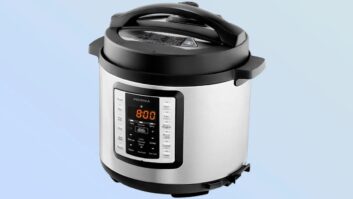EDEN PRAIRIE, MINN. -After Circuit City dropped jaws this past summer by announcing its withdrawal from white goods, all eyes turned to Best Buy in anticipation of the other shoe’s thundering fall.
But that ain’t about to happen, assures Brad Anderson, president/chief operating officer of the nation’s third-largest majap merchant, following Sears and Lowe’s. Although Best Buy understands its competitor’s decision-after all, both chains were subject to the same cost disadvantages associated with selling majaps through a big-box format-the Minneapolis merchant apparently has big plans for the sector.
“For us, margins on appliances are low because there’s so much cost on the back end,” Anderson told TWICE. “If we could just conduct the transaction, it would be a good business. But servicing the products is expensive. Our suppliers don’t pay a fraction of what it costs to do it.”
Yet, unlike his Richmond, Va.-based arch rival, “We don’t think it makes sense to get out of the business,” he stated. “We’re going to remain in appliances.”
But if the overhead of shipping, storing and servicing white goods is so high, why not follow suit and trade in stoves for software? The answer, in two words, is “the Internet.”
“We believe that eventually the kitchen will become important to household management,” Anderson said. “We see our customer getting much more interested in the kitchen, and we’ve made a huge investment to serve that market.” Indeed, among other investments in the category, Best Buy is “funding research at MIT to cause [kitchen-based connectivity] to happen,” he said.
In the meantime, the retailer is also looking to lighten its financial load by re-examining the pipeline linking majap makers to Best Buy and, ultimately, its customers. “There’s an opportunity to work with manufacturers to find a more efficient way to run this business,” which is short of GE’s virtual inventory model now in play at The Home Depot and Wal-Mart, Anderson said.
“We’re not talking about just redistributing the costs, but about taking duplication out of the system,” he said. So far, “suppliers have been interested,” he noted, based on initial vendor meetings that began last month.
Anderson added that he expects Best Buy, manufacturers and consumers to begin to reap the fruits of those deliberations within the next six months.












